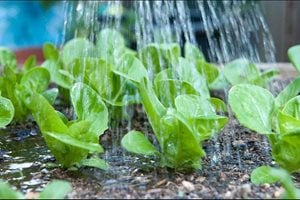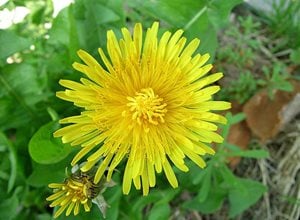What is a hedge?
A hedge is a row of closely planted shrubs or trees that knit together to form a barrier or screen. Many woody plants can be used, but the most popular tend to form dense growth and tolerate regular trimming, so the hedge can be kept neat and at a set size.
Choosing the right hedging plants
There are hedging plants to suit almost any growing conditions, from full sun to shade, and most types of soil. As these are long-lived plants, it’s important to choose suitable species for your site, otherwise your hedge will never look its best.
Also consider how much time you want to spend maintaining your hedge – some species are faster growing and need more regular trimming than others. Certain hedging plants will also grow taller, which can make them trickier to maintain, requiring ladders or long-handled trimmers.
Check plant descriptions carefully before buying and see our guide to choosing hedging plants.
Getting the right look
To narrow down your choices, consider which style and size of hedge you prefer and what functions you want it to perform, including:
- Small, medium or large?
- Dense and impenetrable or loose and informal?
- An eye-catching feature or a green backdrop?
- A valuable resource for a wide range of wildlife?
- Providing screening all year round (evergreen)?
- Leafless in winter to let in more light (deciduous)?
- Fast growing and in need of regular trimming, or slow growing and low maintenance?
- A single species for a uniform look, or several species for a patchwork effect
- Flowers, berries or colourful foliage?
- Native species or something more exotic?
- A thorny deterrent to intruders?
- Shelter from the prevailing wind?
For more on choosing suitable hedging plants, including the pros and cons of evergreen and
Deciduous refers to plants (mainly trees and shrubs) that lose their leaves seasonally, usually during autumn. This is a natural process triggered by the season's shorter days and lower temperatures and allows plants to conserve energy during the winter months.
How and what to buy
Hedging plants are available mainly from specialist nurseries and can be purchased online, although garden centres do sell suitable shrubs individually.
The plants come in a range of sizes, from about 60cm (2ft) upwards - even to a fully trained formal hedge. In general, smaller plants tend to establish more rapidly and successfully than larger plants, but take several years to knit together into an effective hedge.
To work out how many plants you will need for your hedge, measure the length of the site, then see our guide to selecting hedging plants. This gives spacing recommendations for each species, so you can calculate how many plants you will need.
Hedging plants are usually sold without containers, in two main ways:
- root-balled plants – these have wrapped rootballs that are still in their original soil. The plants are usually larger and include evergreen species.
- Bare-root plants don’t have soil around their roots. They are usually deciduous, as this method does not suit evergreens and are only available when dormant, in winter and early spring
- Bare-root plants are often smaller, younger plants, and can be a cheaper option for buying hedging plants, especially if you’re creating a long hedge
- As an alternative to buying just one species, you can buy hedging mixes designed for different requirements. Options may include bird-friendly, native, edible, flowering, all-season and coastal hedging mixes.
- Try to choose all deciduous or all evergreen species however, as their pruning times are different
A few specialist suppliers also sell ready-made hedging – usually a long container of several Established plants have been in their current location for two or three years and so have well-developed root systems able to support strong growth with healthy foliage and flowers.
Where to get ideas and advice
To explore and narrow down your choice of hedging plants, you can:
- Visit various gardens in different seasons – most large gardens feature plenty of hedging in a range of styles. The RHS Gardens are good options, as all plants are labelled, so you can note down your favourites.
- Go to RHS Find a Plant: hedging and screens to browse the photographs and plant descriptions, and find out where to buy them.
- Explore the websites of specialist hedging suppliers.










